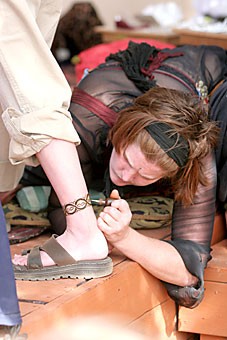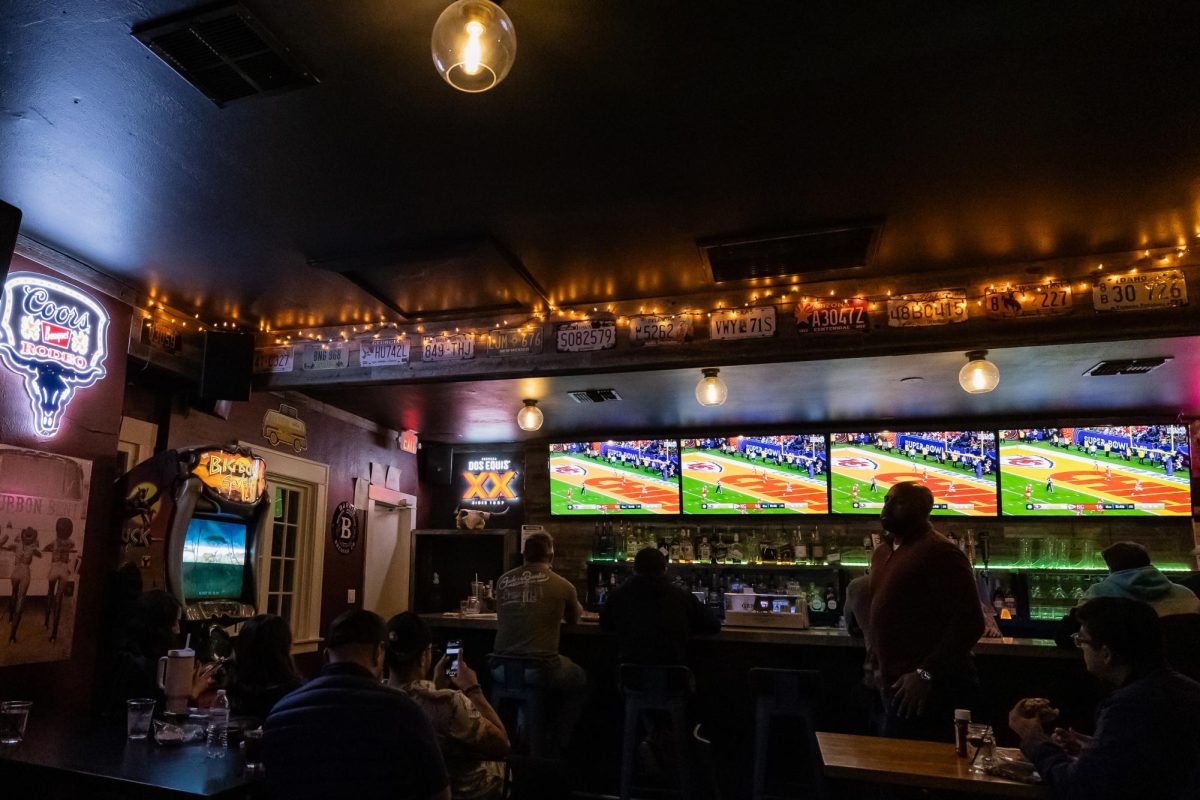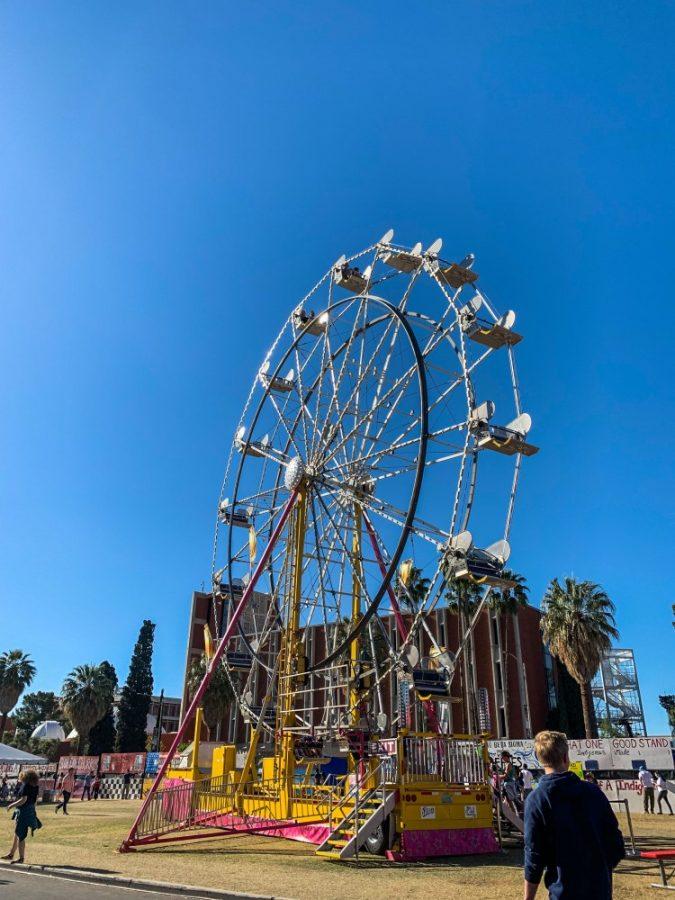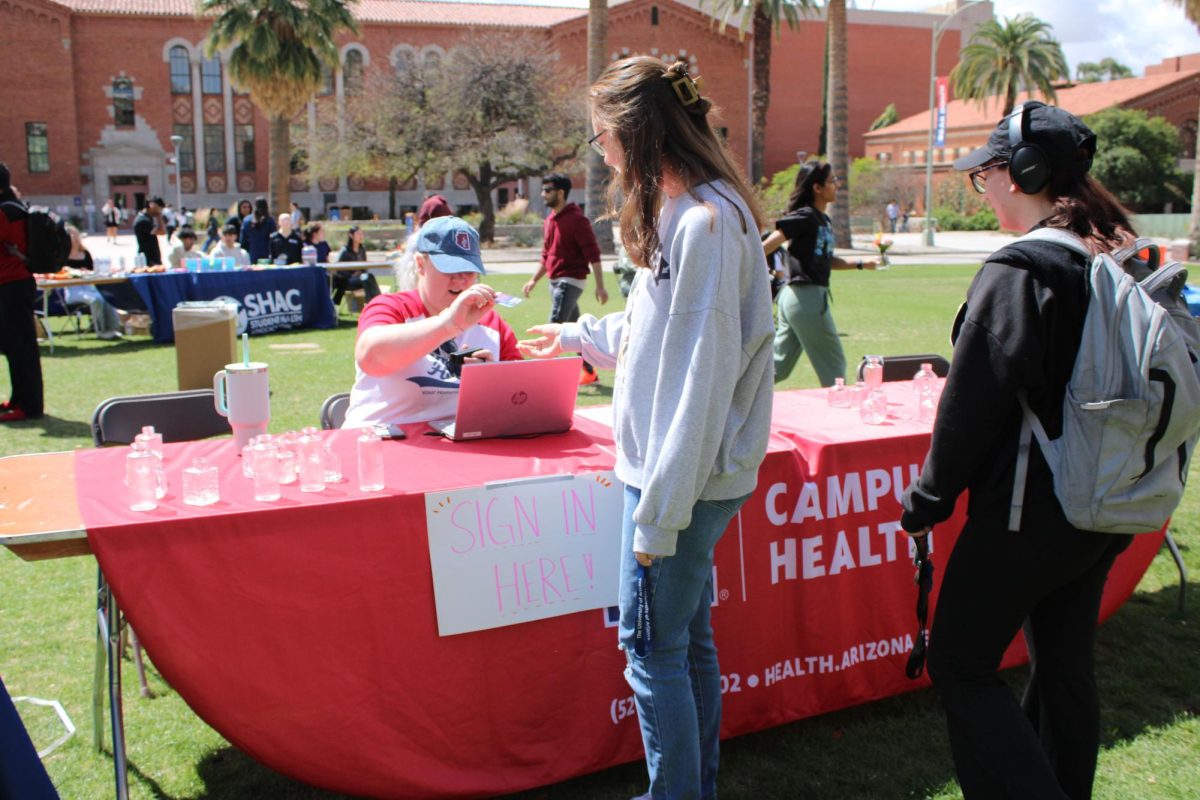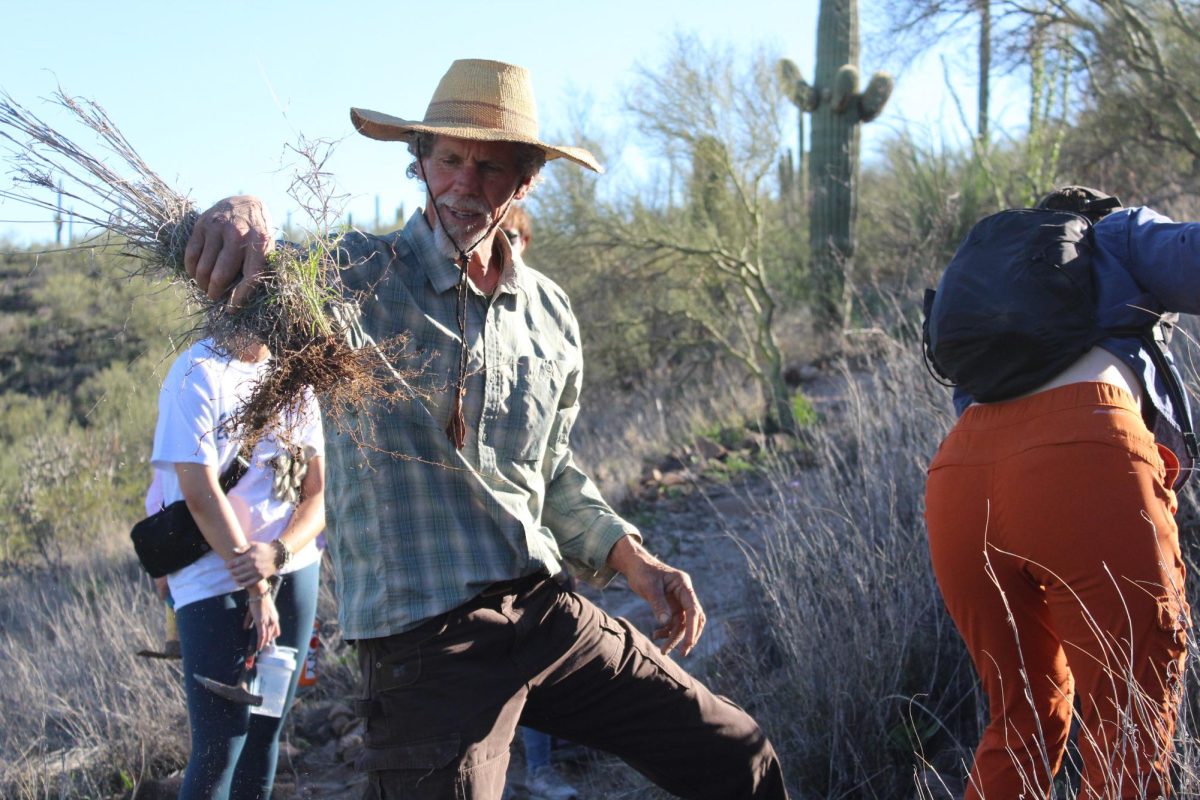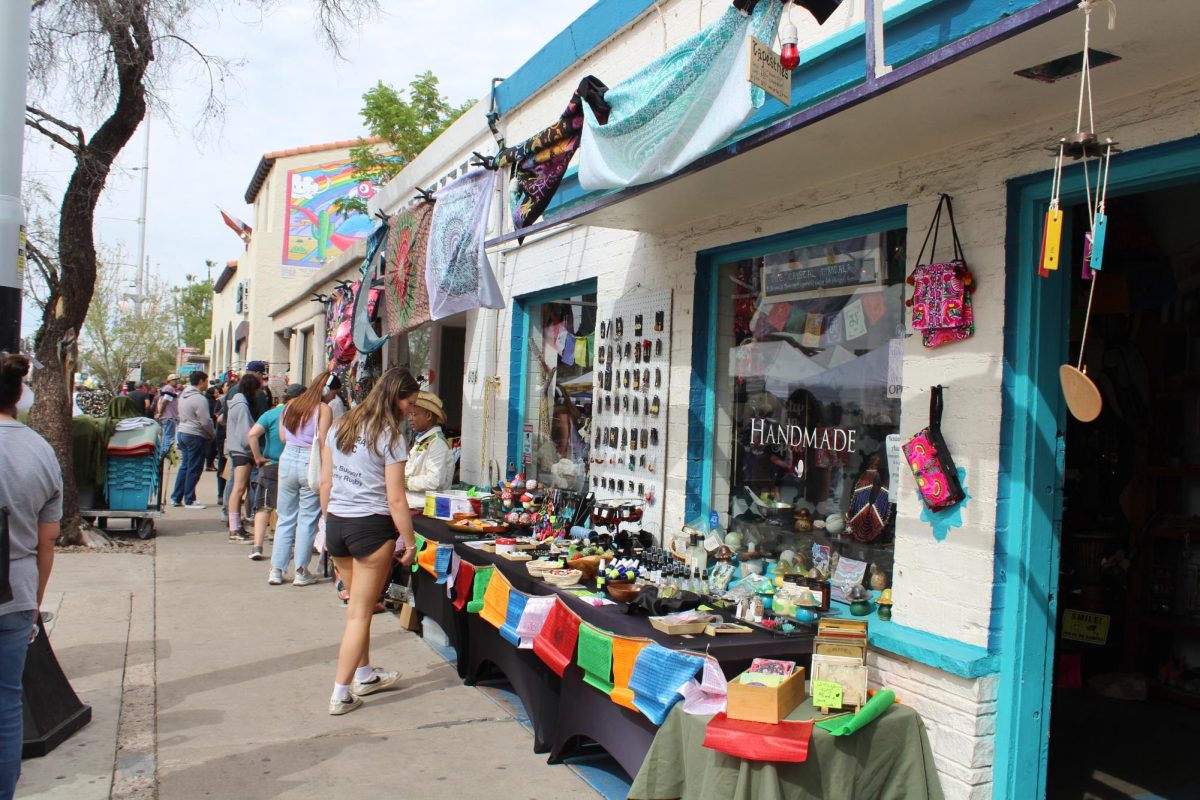The Arizona Renaissance
Festival and Artisan Marketplace is back, bringing a taste of the Renaissance to the desert.
The festival sprawls across 30 acres in Apache Junction, east of Phoenix, and is filled with colorful characters: knights, maidens and all manner of performers, craftsmen and soothsayers.
Amid all the finery and excitement, some UA students have found a fun way to earn a little extra cash.
“”The year before I graduated, we came out here with some friends from (high) school,”” said Debbie Hafenscher, a philosophy sophomore. “”I’d never heard of it before, but as soon as I got there I said ‘I love it.'””
Hafenscher said one of her friends knew John Spurvy, the general manager of rides and games at the festival, and talked to him about getting her a job.
“”It was really just a series of random events that got me the job,”” Hafenscher said.
Spurvy, who is a 25-year veteran of numerous festivals around the country, said he generally prefers hiring local students like Hafenscher to staff the games.
“”About 90 percent of my hires are locals, which is about 80 people,”” Spurvy said. “”It’s mostly high school and some college students. They are generally really enthusiastic and work out very well.””
Now Hafenscher is in her fourth year at the festival, helping festivals operate the dozens of rides and games.
“”Everybody wants to work the rides,”” Hafenscher said. “”The Da Vinci Flying Ships are my favorite because when you spin (the ride) it makes its own (air conditioning).””
Unlike modern carnivals, the rides at the Renaissance Festival are human-powered, requiring teamwork and elbow grease whether the ride spins, rocks or slides.
The human element to the rides also increases the likelihood of operator injury.
Hafenscher said she has had her fair share of scrapes and bruises, including getting hit in the head by a wooden horse at the children’s jousting ride and being stuck in the arm by a child’s dart, but that these minor injuries do not detract from her enthusiasm.
“”I feel like I get paid to have fun,”” Hafenscher said.
Looking the part is another aspect of the job that appeals to Hafenscher. She said she has been buying various parts of costumes at the festival since her first year, and more than doubled the total cost of her outfit with the recent acquisition of an elaborate leather corset hand-tooled by the festival’s master blacksmith.
I’ve spent about $500 total on my costume. It was $300 just for the corset. But that’s partially because (the blacksmith) has been working on it since last year.
– Debbie Hafenscher, philosophy sophomore
“”I’ve spent about $500 total on my costume,”” Hafenscher said. “”It was $300 just for the corset. But that’s partially because (the blacksmith) has been working on it since last year.””
But working as a Renaissance-era carnival barker isn’t the only way to work at the festival. One student’s family is in the process of expanding the family business to the festival grounds next year.
Mike Geary, a pre-education sophomore, said he is gearing up to help his family, who makes Celtic jewelry, sell their work at the festival.
“”My family does (trade) shows all over Arizona and the West,”” Geary said. “”Last year we were doing a show in Northern Arizona, and an executive from the (Renaissance) Fair stopped by and mentioned that our goods would go over well there.””
Geary’s family purchased a space at the festival and will begin constructing a structure to sell jewelry next year.
While buying a plot and building a structure may seem like a large investment for a business that’s only open for a few weeks a year, Geary said the payoffs could be substantial.
“”They estimate that 2.5 to 3 million pass through the fair every year,”” Geary said. “”You figure if only 1-2 percent of those people make purchases, with a month’s work you can pull in $250,000 to $400,000.””
Geary has never worked at a Renaissance festival, though he has attended many in his home state of New York and has visited the Arizona festival three times since his family moved to Phoenix last year. He said he is excited about working at the Arizona festival.
Hafenscher said next year will be her fifth and last festival because she will have less free time after graduation, but she will always make it back as a patron.
“”I’ll never not come here,”” Hafenscher said. “”And I’ll always wear my outfit.””



